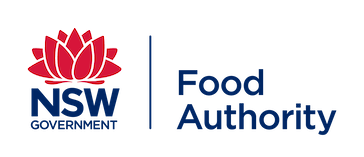Dairy food transport vehicles
Dairy food transport vehicles include businesses that deal in the storing and transportation of dairy product.
For:
- collection and transport of milk from a dairy primary production business to a dairy processing business, and
- transport of milk or dairy products between dairy processing businesses
see instead dairy collection and transport.
Licensing, registration
Operators of dairy food transport vehicles are required to:
- apply for a Food Authority licence online or download an application form (PDF), print and post it
- prepare for regular audits.
You must not begin operations until you are informed that your licence application has been processed. If the premises are found to be operating without a licence, enforcement action may be taken.
- For more see applying for a food licence
Skills & knowledge
There are no formal qualifications required for dairy food transport, however each food handler and person in control of a food business is required to have food safety skills and knowledge appropriate to their food handling activities.
The full requirements are set out in the Food Standards Code Standard 3.2.2 - Food Safety Practices and General Requirements, clause 3 and the FSANZ guide Safe Food Australia.
Construction and facilities
Construction and layout of a food premise must be designed to minimise the opportunity for food contamination.
Dairy food transporters must ensure that their fixtures, fittings, equipment and transport vehicles are designed and constructed in a manner that means they can be easily cleaned and where necessary, sanitised.
Businesses must also ensure that the premises are provided with the necessary services of water, waste disposal, light, ventilation, cleaning and personal hygiene facilities, storage space and access to toilets.
The full requirements are set out in the Food Standards Code, Chapter 3, Standard 3.2.3 - Food Premises and Equipment and the FSANZ guide Safe Food Australia.
Hygiene & handling
A food handler must take all reasonable measures not to handle food or surfaces likely to come into contact with food in a way that is likely to compromise the safety and suitability of food.
For details, see the Food Standards Code, Standard 3.2.2 - Food Safety Practices and General Requirements, clause 3 and the FSANZ guide Safe Food Australia.
Cleaning & sanitation
Dairy food transporters must implement a documented cleaning schedule that identifies:
- all fixtures, fittings and equipment used in the transportation of dairy products
- the frequency of cleaning
- how all fixtures, fittings and equipment are cleaned and sanitised
- how food contact surfaces and utensils are sanitised (where applicable)
- chemical usage (eg. strength, contact times, temperature).
All fixtures, fittings and equipment must be adequate for the production of safe and suitable food, and fit for their intended use.
Routine internal cleaning and sanitation inspections must be undertaken, and records maintained for corrective action taken on any identified issues.
Cleaning chemicals must be suitable for contact with food and used in accordance with the manufacturer’s instructions.
Food safety controls
Operators supplying vehicles for dairy food transport need to maintain a Food Safety Program.
This is a tailored operating plan for the business which identifies hazards to food safety and how the business will manage them.
For a generic starting template see Food Safety Programs.
Labelling
Requirements for product labelling apply, as set out in Food Standards Code, Chapter 1, Part 1.2 - Labelling and other Information Requirements and the FSANZ labelling user guides.
For an introduction to product labelling and Food Authority factsheets, see labelling.
Testing
There are no specific testing requirements for dairy food transport.
Inspections & audits
The Food Authority will inspect your vehicle(s) at the time of licensing and then once every 3 years.
Things that should be considered in your vehicle planning and maintenance, include:
- Vehicles used for food transport must be designed to protect food at risk of contamination during transport
- Vehicles used to transport food must be able to be cleaned effectively
- Food contact surfaces in transport vehicles must be able to be cleaned and sanitised
- During transport, potentially hazardous foods (PHF) must be transported under temperature control, that is:
- frozen foods must remain frozen
- cold food products are to be kept at < 5°C
- hot food products are to be kept at > 60°C
For more see audits, inspections and compliance.
Legislation & standards
As an operator in the dairy food transport industry, you will also need to meet the requirements set out in:
- Food Act 2003 (NSW)
- Food Regulation 2015, including relevant parts of the Dairy Food Safety Scheme
- Food Standards Code
- AS 4674:2004 - Design, construction and fit out of food premises
